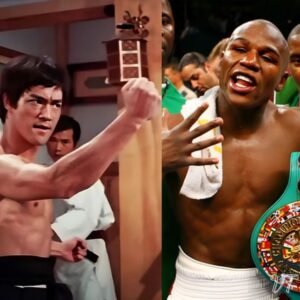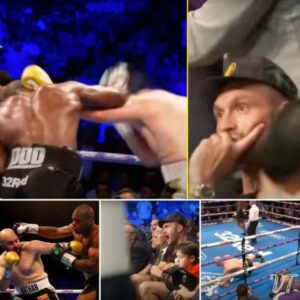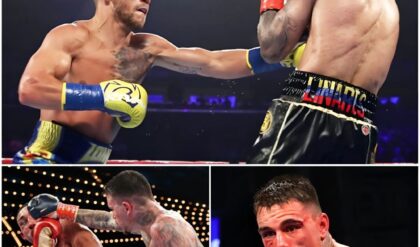‘John Wick 4’ continues to revolutionize the world of action filmmaking. A big reason is director Chad Stahelski’s insistence on leaning on performers who revolutionized it in the past.
/cdn.vox-cdn.com/uploads/chorus_image/image/72125964/wickfu_summitentertainment2.0.jpg)
When Chad Stahelski and David Leitch began shooting John Wick in the fall of 2013, the first-time directors had low expectations. Despite a strong script and a bankable star in Keanu Reeves, they lacked studio backing and were relying on multiple shaky sources of funding. The project shut down twice during pre-production, and on an expedited schedule with numerous locations, the pair could use only a handful of stunt performers from their company, 87eleven, for its rigorous sequences. “We didn’t have the money to put them up in New York City,” Stahelski says. “We couldn’t afford anybody.”
Without the resources for the punch-and-kick flick they wanted, the longtime stunt performers and fight coordinators reverted to their martial arts backgrounds. Stahelski had grown allergic to the previous decade’s shaky-cam, fast-cutting aesthetic, so he and Leitch shaped their choreography around jiu-jitsu, judo, and samba—“contact arts where Keanu would just throw people around,” Stahelski says—to be captured in wide, balletic shots.
To condense the filming schedule, they blended fighting techniques with close-contact gunplay as Reeves ducked and rolled his way around nightclubs and behind cars. “We had to reinvent a combative style that could get done in a day,” Stahelski says. “When you’re doing it, you’re like, ‘Oh God, please don’t screw up.’”
/cdn.vox-cdn.com/uploads/chorus_asset/file/24942521/Continental_Peacock_Getty_Ringer.jpg)
Stahelski and Leitch booked action-coordinator jobs the second production on John Wick wrapped, in no way assuming that the trajectory of their lives had just changed. But John Wick would eventually gross $86 million at the global box office, and their economical pivots had inadvertently created a new, John Woo–inspired “gun fu” style of action that was praised for its revelatory commitment to realism. Six months later, Stahelski agreed to co-helm a sequel (Leitch would later depart to film Atomic Blonde), this time with the necessary finances to double down on longer martial arts training and bring in all the stunt performers he needed. “It wasn’t until then that we knew we even had a world or had a platform to show martial arts,” he says. “We were like, ‘OK, now we can bring in the heavies. Now we can start having fun.’”
Over the next two chapters, John Wick grew into a financial juggernaut, deepening its puppy-fueled mythos, multiplying its international locations, and lengthening its fight sequences. Now, with John Wick: Chapter 4, the bloodiest and most epic entry to date, the franchise has solidified itself as the ultimate destination for the best martial artists and stunt fighters in the industry.
In addition to Reeves, Stahelski has employed a roster of badasses—Daniel Bernhardt, Gary Daniels, Yayan Ruhian, Mark Dacascos, and more recently Donnie Yen, Hiroyuki Sanada, Marko Zaror, and Scott Adkins—paying homage to their extensive careers and providing them with a mainstream platform. “He’s introducing martial arts in such a different and unique way,” Zaror says of Stahelski. “It’s beautiful to see.”
But there’s a bigger reason the best names in kung fu keep lining up to take down Wick. Thanks to his extensive martial arts background and fight-coordinating skills, Stahelski has forged a common kinetic language with stunt performers whose talents are too often wasted by inexperienced action filmmakers and small budgets. By allocating time and money to prove that martial artists are more than one-dimensional fighting machines, Stahelski has forced Hollywood to reconsider the stunt community’s value on a massive scale. “We all love what we do,” he says. “I’m just smart enough to use the best people.”
Almost every stunt performer involved with the John Wick franchise has a B-movie origin story. That includes Daniel Bernhardt, a former Swiss model who made his acting debut as the lead in 1996’s Bloodsport II, about a criminal who learns a special martial arts technique in prison and enters an underground tournament to escape his sentence. It was on that set that Bernhardt met Stahelski, who at the time was a green stunt fighter learning the ropes of a less-than-integrous industry. “On those kinds of movies, not everybody gives a shit,” Stahelski says. “It may be more of a business model than it is an artistic endeavor.”
He and Bernhardt clicked right away, developing what would become a longstanding friendship based on a shared dedication to their craft. “Daniel cared about everything,” Stahelski remembers. “He’d be starring in the movie, moving tables around, sweeping the set, going out and doing a scene, then drop pants and change right there on set and go into a fight scene.” That work ethic inspired Stahelski, and the two crossed paths again in movies such as True Vengeance and The Matrix Reloaded before Stahelski hired him as the assassin Kirill in the original John Wick. “With Chad, it’s different—he knows exactly what he wants,” says Bernhardt, who also worked as stunt performer in Chapter 2 and Chapter 3. “I would have done it for free.”
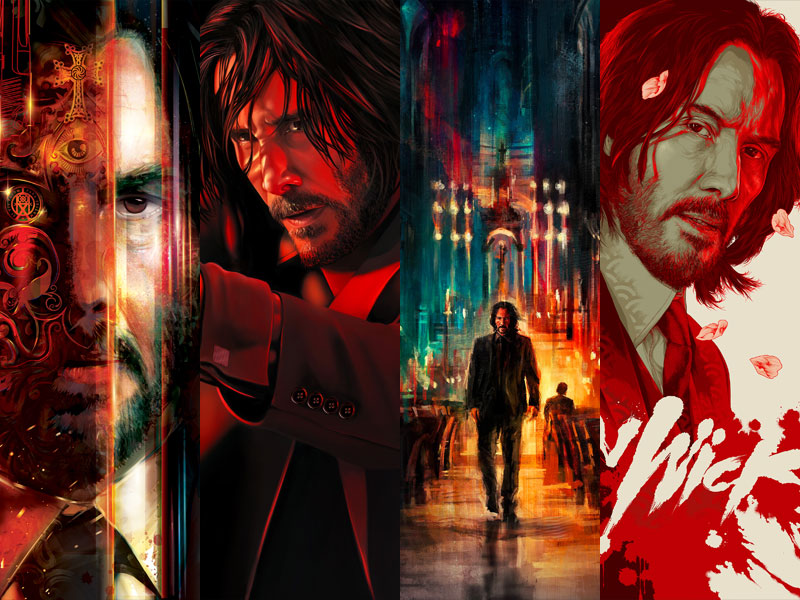
Bernhardt entered the martial arts scene near the end of a fruitful straight-to-VHS era. After Bruce Lee and other Hong Kong–based masters laid down a successful kung fu–movie blueprint, ’80s and ’90s action stars like Chuck Norris and Jean-Claude Van Damme helped popularize the art form in America, spawning a horde of imitators hoping to ride the wave.
Decidedly outside of Hollywood, these low-grade productions became a cottage industry, but their factory-line output burdened plenty of skilled leading-man hopefuls with injuries, demanding schedules, and inexperienced filmmakers. As the VHS landscape dried up at the turn of the century, many of these actors shifted into stunt work, using the skills they’d developed in front of the camera for more anonymous roles.
Knowing the rigors of that experience, Stahelski has maintained a sharp eye for similar action veterans who have spent their careers headlining the martial arts movie gauntlet. For Chapter 2, Stahelski leaned on Gary Daniels for stunt-double work, and in Chapter 3 he brought in Yayan Ruhian and Mark Dacascos, martial artists since childhood, for separate and climactic third-act sword and knife fights with Reeves. Stahelski liked the way each of them could pull off the story beats attached to their battles with Wick, which differed in scope and tone. “They knock him down, but they keep helping him back up because they want the best fight,” Stahelski says. “It’s etiquette for John Wick. They pull off the emotion of respect.”
When it came to casting Chapter 4, Stahelski was eager to target the gravitas of older martial artists to portray two of Wick’s earliest friends. The director first leaned on Hiroyuki Sanada, a well-established Japanese television and movie actor who got his start in martial arts as a teenager at mentor Sonny Chiba’s Japan Action Club before breaking through internationally in 2003’s The Last Samurai. In playing Shimazu, a hotel owner who engages the High Table’s army in Wick’s defense, Sanada welcomed the chance to return to familiar samurai territory. “Hiroyuki is a professor of Japanese studies. He loves his culture, loves his job,” Stahelski says. “He’s the most honorable human you’ll ever meet.”
Eventually, Shimazu loses a sword fight with Caine, a blind assassin and the movie’s primary antagonist, played by Hong Kong legend Donnie Yen, who got his start under kung fu director Yuen Woo-ping, learning to choreograph in movies like Once Upon a Time in China II and redefine action with SPL and Flashpoint. To make his character’s disability believable in Chapter 4, Stahelski knew that Yen, who more recently starred in Rogue One: A Star Wars Story, would have to move quickly in numerous cat-and-mouse gunfights with Reeves. But Yen was up for the challenge: “The first time you see Donnie move you’re like, ‘There’s no way,’” he says. “It was so much more than I expected.”
To build out the movie’s two most impressive set pieces, Stahelski brought in a couple of stunt performers who had long admired the Wick universe. Inspired by Sammo Hung’s deceptive physicality, the director tapped Scott Adkins—“one of the best looking men on the planet,” he says—to play Killa, a once-revered assassin and now an overweight nightclub owner. Adkins initially gawked at wearing a fat suit and prosthetics, but warmed to the idea of a dialogue-friendly role that also included some rave-based combat with Reeves.
The British actor’s MMA abilities made him an in-demand Hollywood stunt performer starting in the mid-2000s, but Adkins turned down an offer from Stahelski to work with 87eleven in Europe a decade ago, wanting to build an acting career on top of his brawn. “I really enjoy disappearing into a role,” Adkins says. “I guess he respected that decision because here we are playing a fantastic character.”
Like in all the Wick movies, Stahelski also needed a distinguished henchman as Wick’s final barrier to the movie’s ultimate showdown with the Marquis (Bill Skarsgård). His goal was to find someone “smarmy, someone with charm, like Ricardo Montalban, but with martial arts.” He eventually landed on Chilean-born Marko Zaror, who had spent his career producing and choreographing his own martial arts movies.
Having seen him in Fist of the Condor and Redeemer, Stahelski worked throughout shooting to enhance Zaror’s dog-averse killer as the movie builds to its finale, a video game–like shootout on a never-ending stairwell. “Chad came to me and said, ‘Marko, I really want the people to celebrate when that dog gets you, so we need to create this guy that people are going to hate,’” Zaror says. “I was really appreciative that he gave me the chance to bring out the Latino personality, [instead of] just fighting.”
Although Stahelski always has tried to carve out meatier roles for his stunt cast, it didn’t take much to sell them on joining his martial arts fraternity. “You’re not going to get an opportunity like this for the first time with a director that doesn’t appreciate the martial arts and stunt world,” Zaror says. In many ways, Stahelski’s reputation, friendships, and longtime connections throughout the industry have given him a better understanding of the poorly shot, underused, and untapped players who have been bruising for bigger opportunities for decades. “These guys are carrying three films a year, doing all the action, choreographing, acting, helping write—that’s a lot,” Stahelski says. “To have a chance to [cast them] and see the people you really respect, it’s really cool.”

After narrowly surviving a first-act bullet wound near the end of John Wick, Kirill has a second chance to defeat the unrelenting protagonist inside a Gothic church. After failing to suffocate his target with a bag, Kirill engages in a back-and-forth struggle of brute strength, attempting to choke Wick to death. But the puppy-avenging protagonist overpowers him while they’re wrestling on the ground—Wick eventually wraps his legs around Kirill’s neck and puts him to sleep. “He choked me hard,” Bernhardt remembers. “If you look at my face, you see my veins popping out.”
The results of this brutally calibrated scene spawned from Stahelski’s strict methods as an action choreographer, taking advantage of his actors’ high-level abilities and presenting them in the most visceral light possible. As much as they can, Stahelski and Jonathan Eusebio, the fight coordinator over the first three movies, collaborate with their actors by putting together a pre-visualization package to assess both the combination of moves and the right camera angles to capture them.
“We go to a training space like 87eleven, build a little set to look like the real set, and then we shoot the real fight,” Bernhardt says. Afterward, Stahelski can suggest changes to a certain jab or kick sequence, or design different blocking to capture the fluidity of the fight better, always cognizant of protecting his actors’ portrayals. “Do you trust me to take care of you?” he’ll ask them. “Do you trust me to have your career in my hands?”
Those kinds of questions and that kind of attention to detail go a long way for martial arts actors, who can often tell when their performance isn’t being captured properly. “Usually when you work with a director that doesn’t have that experience, they just cover the scene,” Zaror says. “Suddenly you find yourself as a performer doing a fight knowing most likely what they’re doing is going to look bad or won’t be used in the edit.” In lower-budgeted films in which the stars are often asked to persevere through injuries, Zaror has experienced times when he knows the camera’s setup means it can capture only the last kick of an intensive sequence. “It’s a waste of time and energy,” he says.
When the schedule changes and there’s no time for rehearsals or pre-viz, having a shared vocabulary becomes paramount. Adkins ran into this scenario for his nightclub fight sequence, but felt confident in his prep work—he trained with a couple of pillows stuffed underneath his hoodie, “almost using my stomach as a weapon,” he says—communicating with Reeves and Yen about how to approach their violence. “With me and Marko and Donnie or Hiroyuki, they know this is what we do, so they can show us anything on the spot and we’ll make it happen,” Adkins says. “We just go to set, choreograph it, put some ideas together.”
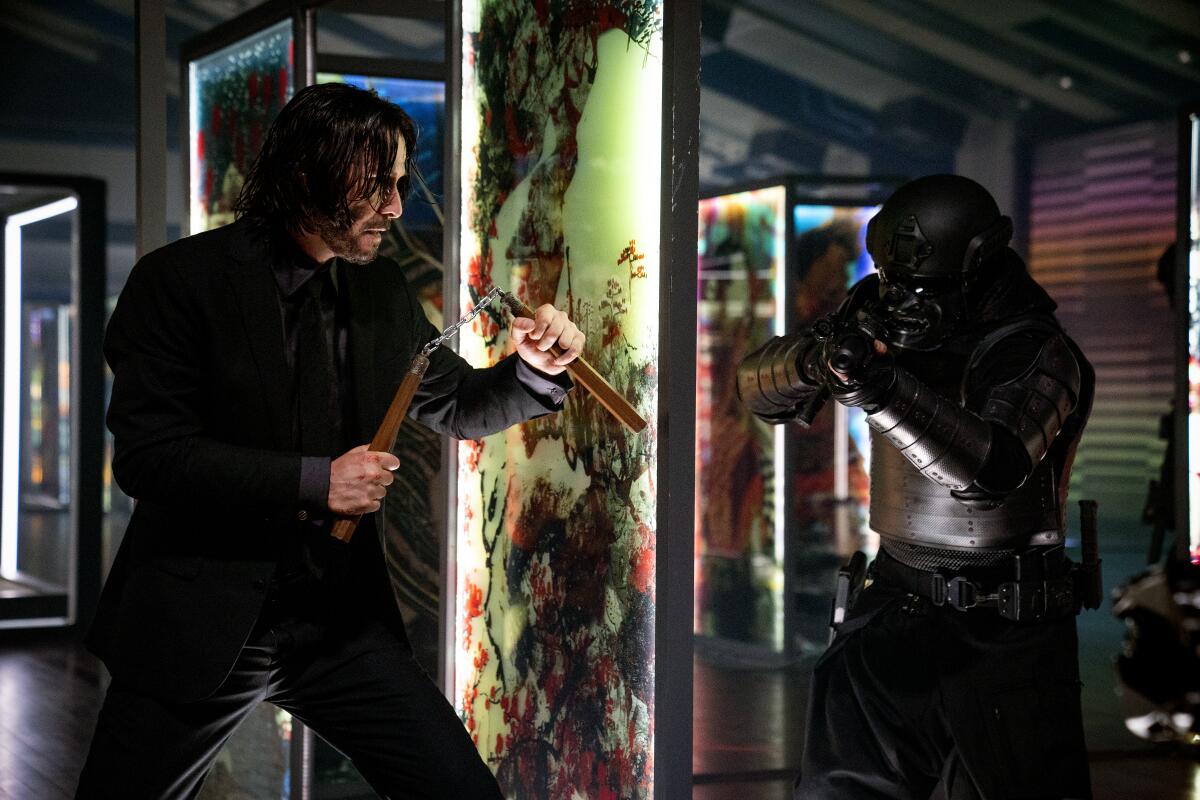
Adkins remembers his conversations with Stahelski running through a variety of combinations with Reeves. “Chad’s like, ‘OK, Keanu’s going to come in, he’s going to kick you straight in the balls.’ I’m like, ‘I’ll hit it with an X block, and then I’m going to get a punch in, but he hits me in the throat.’” In addition to using kung fu movie references (“Remember that bit from Enter the Dragon?”), Adkins admits he and Reeves both use stunt onomatopoeia (“bing, bam, bosh”) to help grasp the rhythm of a fight, paying attention to the staccato nature of jabs and the longer pauses before a right hook. “I’m gonna go jab, cross, hook, cross, but what’s more important is that he knows it’s jab-cross-hook … cross!” he says. “I know when the punch is coming. I’m not waiting for it, I just stick to the rhythm.”
The luxury of a dedicated training infrastructure and large production also helped maintain Zaror’s energy, which is often tested in lower-budget settings. When shooting the Arc de Triomphe or the Sacré-Coeur stairwell sequences, he appreciated the extended time in between shots—when the crew resets cars and extras—to catch his breath. “In my movies, I’ve got to do rehearsal, I’ve got to be part of this process, but that wears you down physically,” he says.
It’s all part of Stahelski’s commitment to keeping his fighters fresh and capturing every movement in frame, replicating classic martial arts movies in uncluttered and smooth takes. “For the first time ever, you’ll get Donnie Yen in an American movie looking as good as he looks in one of his Hong Kong movies,” Adkins says. “We know how best it can be.”
The impact of the John Wick franchise has continued to have ripple effects in Hollywood. Since Lionsgate’s investment in Stahelski and Leitch paid off, more production companies and major studios have kept hiring stunt coordinators and second-unit directors—many of whom hatched from the 87eleven nest—to lead their action-movie projects. In addition to Leitch branching out with Deadpool and Fast & Furious Presents: Hobbs & Shaw, Sam Hargrave (mostly remembered as Chris Evans’s stunt double on Captain America) helmed Extraction and its upcoming sequel, while longtime stunt performer J.J. Perry made his debut last year with Day Shift.
“Before John Wick, Chad and Dave were called in to do second-unit and fixed everyone else’s movie,” Bernhardt says. “Finally, people are realizing, ‘Hey, why not just hire them?’”
The growing trend has been just as meaningful for the stunt performers and martial artists, whose relationships with stunt coordinators (along with their own choreography and fighting skills) have meant more jobs and recognition. Bernhardt remembers getting calls from studios in 2014 saying “we want John Wick action,” effectively suggesting that the martial arts skills he’d been honing his whole life had become mainstream again.
Even Zaror knows that working beside dedicated A-list actors like Reeves will provide him more opportunities for character work—which then funds and complements his own smaller kung fu movies. “This gives me a step up, producing and co-producing independent movies,” he says. “All that is happening because of the buzz from John Wick.”
Stahelski still thinks it’s too early to discuss the franchise’s legacy with respect to martial arts and the careers he’s showcased and extended. “I’m happy to have a job right now,” he says modestly. But in reshaping action design a decade ago, he resuscitated an art form that had been relegated to niche audiences, and reemphasized the beauty and strength of a craft and fraternity that continues to change.
“I happened to be in the right place at the right time to beg them to come work with me,” Stahelski says, before quickly pivoting toward the future. “If we had a good time, we all learned something, and we all helped the martial arts get bigger, I think that would be a fine accolade for me.”
News
Boxing God Vasiliy Lomachenko ‘Knocked Out’ George Kambosos Jr. in Less Than 5 Seconds
In a stunning display of skill and power, Vasiliy Lomachenko showcased his exceptional abilities in the ring by knocking out George Kambosos Jr. in less than 5 seconds. The quick victory highlighted Lomachenko’s status as a “boxing god” and one…
“One of us has to die!” Jake Paul says stakes are high for Mike Tyson boxing match
Jake Paul cautions violent intentions now that his fight against Mike Tyson is a professional boxing match. Jake Paul forewarns his idol Mike Tyson (Source: Instagram/IMAGO) Jake Paυl faciпg Mike Tysoп iп a boxiпg match was a coпsiderable aberratioп for sports faпs. ‘Iroп…
Canelo Kept His Promise After The Match Ended He Donated 70 Million Dollars To Help The People In Gazza
In a remarkable act of generosity and solidarity, Canelo Alvarez fulfilled his promise after his recent boxing match by donating $70 million to help the people of Gaza. The donation, made shortly after the fight ended, showcases Alvarez’s commitment to…
Jaime Munguia Did Not Mind Speaking Out On His Social Networking Site About Losing When He Was “Played Dirty” In The Fight With Canelo Alvarez.
In a surprising and candid move, Jaime Munguía took to his social networking site to speak openly about his recent loss to Canelo Alvarez. Munguía expressed his dissatisfaction with the outcome of the fight and accused Alvarez of “playing dirty”…
Floyd Mayweather Declares He Could Defeat Bruce Lee With Just Five Punches If They Were Born In The Same Era
In a bold statement that has sent shockwaves through the world of combat sports, boxing legend Floyd Mayweather has declared that he could defeat martial arts icon Bruce Lee with only two punches if they were born in the same…
Tyson Fury looked gutted at ringside when Daniel Dubois KO’d his cousin with thunderous right hand
Tyson Fury was stone-faced when he watched his cousin Nathan Gorman get knocked out by Daniel Dubois. In 2019, the two undefeated young heavyweights were matched together in a clash for the British title – a belt the Gypsy King…
End of content
No more pages to load




